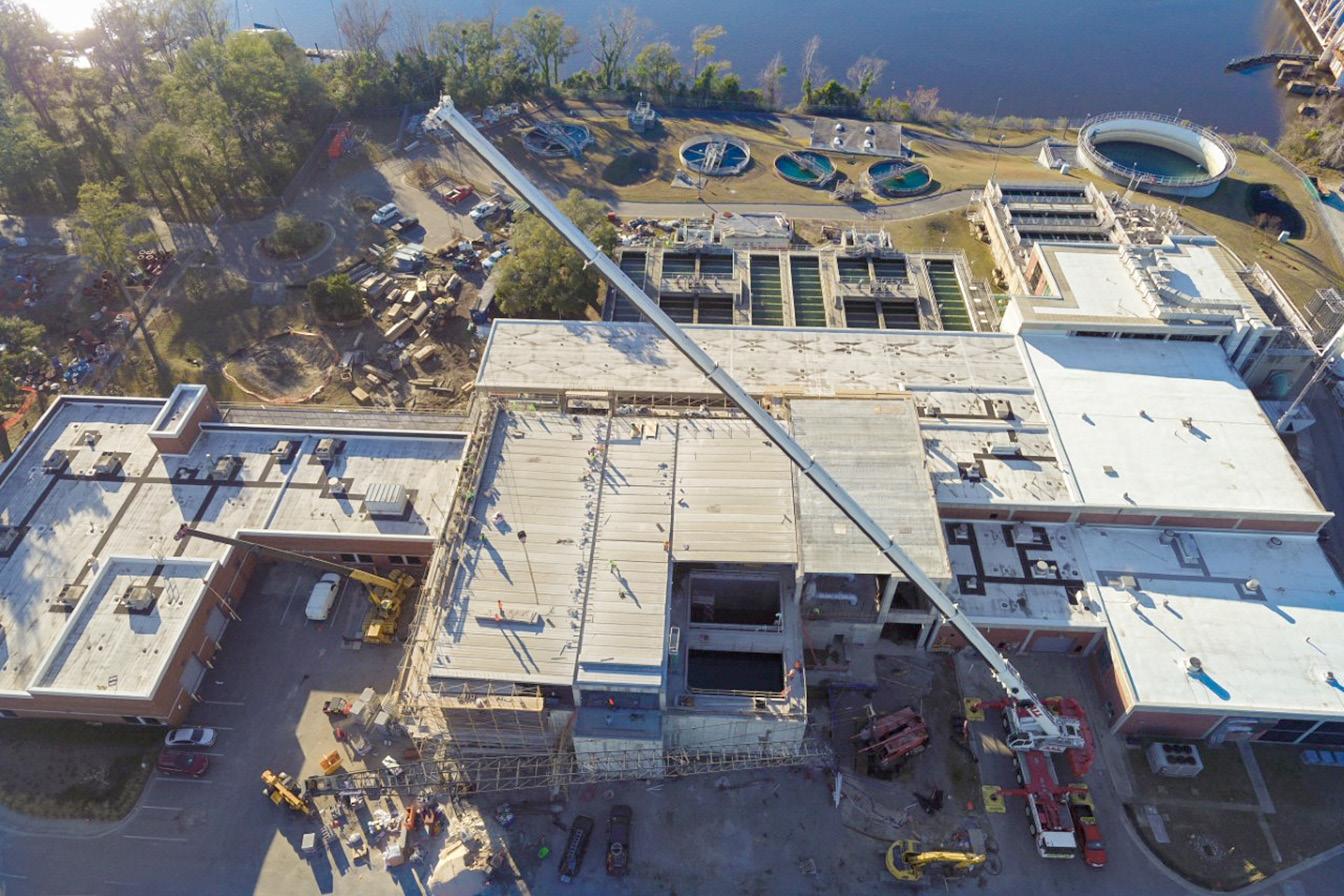
3 minute read
Accessing Clean Water in the Age of GenX
water quality Accessing Clean Water in the Age of GenX
by Shelby Diehl
When it comes to the lower Cape Fear River, clean water isn’t exactly its strong suit—and Chemours is partly to blame for that. In 2017, the chemical company was outed by Wilmington Star-News for releasing a toxic chemical called GenX into the drinking water supply of approximately 250,000 people from its Fayetteville Works site. The company has since announced they would halt discharging GenX into the Cape Fear River, but if it’s “safe,” as company officials assured, then why stop?1
GenX was just a small portion of a whole class of chemicals being discharged from the facility as PFAS (per- and polyfluorinated alkyl substances). PFAS can be found in a number of familiar items such as Teflon pans, food packaging, Scotchgard and dental floss. These common, persistent chemicals are toxic. And yet, they’re everywhere.1
PFAS aren’t limited to the plant run-off seeping into the groundwater and into the creeks surrounding the plant. PFAS are in the air. The chemicals were being released through air stacks while further contaminating the groundwater for hundreds of water wells surrounding the plant. The worst part? The water utility confirmed they didn’t have the ability to filter these chemicals from our drinking water for all those years.1
While the systems didn’t exist for the forty years GenX was being dumped into the Cape Fear River, the Cape Fear Public Utility Authority (CFPUA) has made efforts in recent years to change the narrative. These efforts involve the installment of granular activated carbon (GAC) filters and reverse osmosis systems in the Sweeney and Richardson Water Treatment Plants.
The Sweeney Water Treatment Plant draws water from the Cape Fear River and provides drinking water to about 80 percent of CFPUA’s customers. These customers fall within the limits of the City of Wilmington, parts of Ogden, Monkey Junction, King’s Grant and the Flemington/321 Corridor.2
Sweeney is actively installing eight new GAC filters with the completion anticipated for summer 2022. The GAC filters are deemed the best option to reduce GenX and other PFAS compounds in the river. Until these new filters are finished, CFPUA has altered existing filters at Sweeney but,
Photo courtesy of Vaughn Hagerty Drone photograph shows construction on the new filter facility for Sweeney Water Treatment Plant. while reductions have been observed, the fix isn’t suitable for the long term.2
“The new GAC filters cost $43 million to build and will cost millions more every year to operate,” says Vaughn Hagerty, CFPUA’s Director of Communications. “Those funds, along with millions of dollars more, have been and will be spent for one reason: Chemours and DuPont put PFAS in our community’s drinking water …. We believe Chemours, not our customers, should be paying those costs. After all, they caused this problem.”
Meanwhile, the Richardson Water Treatment Plant draws water from the Castle Hayne and Pee Dee Aquifers and distributes it to northern New Hanover County including Murrayville, Wrightsboro, Porters Neck and parts of Castle Hayne and Ogden. This plant has state-of-the-art reverse osmosis membrane technology recognized to be one of the best available technologies for removing organic material in the water and effective in reducing the formation of disinfection byproducts.2
What about southern New Hanover County? CFPUA operates a smaller groundwater system called the Monterey Heights system that distributes water from the Castle Hayne and surficial aquifers to Monterey Heights, Woodlake, Laurel Ridge, South Myrtle Grove, Sentry Oaks, Deer Crossing, Lord’s Creek and Veteran’s Park.
“Of the dozens of PFAS compounds for which Monterey Heights’ drinking water was tested in 2021, just four were found in amounts from non-detect to less than one part per trillion (ppt) in samples throughout the year,” says Hagerty. “That means customers in the Monterey Heights system are already receiving water with extremely low PFAS levels or no PFAS at all.”
And still, what’s pouring from the tap isn’t the purest source of H2O. This lack of chemical-free water has led many to the store to purchase single-use bottles and gallons of water, but this isn’t the only way to get clean water. Instead, consumers can purchase bulk reverse osmosis water or purchase their own reverse osmosis system.










